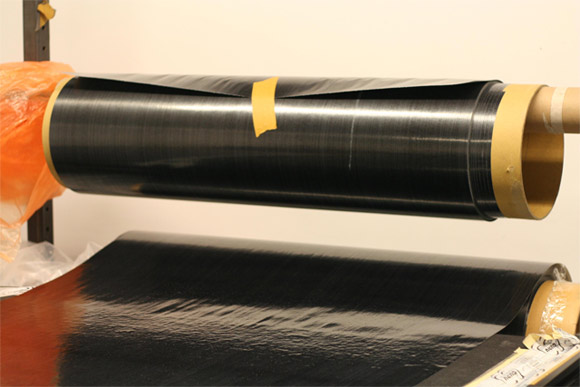This post was guest blogged by Michel Somogyi of Guru Bicycles. We asked Guru to put together a behind-the-scenes look at how their bicycles were manufactured.
In 1993, a young engineering student and bike aficionado set out to do what many had tried before him – to build the perfect bike. From the onset, he did things differently, combining aerospace-inspired methods and materials with the passion for fine craftsmanship he had inherited from his Italian ancestors. One cyclist at a time, he custom-built his offering to deliver a perfect fit and singular performance. When his creation became a company, he named it Guru, based on the bicycle’s capacity to teach life lessons and inspire.
Today, we are a diverse crew of cycling enthusiasts working hard to make a good number of bikes, each crafted one-at-a-time. Everything we produce is done out of our headquarters located just outside Montreal (Qu̩bec), Canada Рa city that represents the gateway to Europe in North America and a capital of the global aerospace industry. Our approach to making bikes is based on combining the best of both worlds: cutting edge technology delivered by hand and with an old school attention-to-detail.
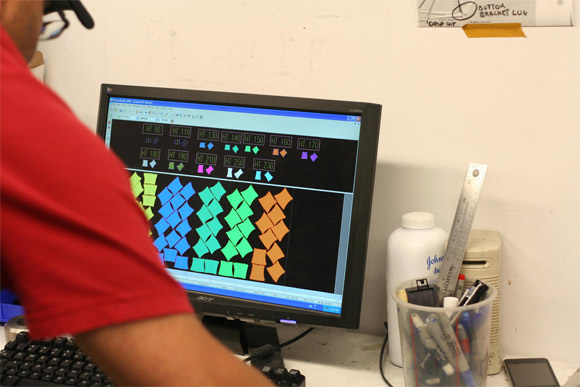
We believe a bicycle is more than a piece of equipment.
It is the ultimate interface between man and the road, one that should feel like a natural extension of your body. That’s why we custom craft our frames based on individual rider specifications.
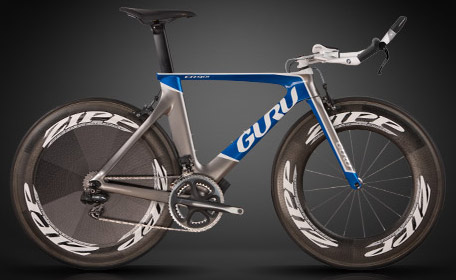
Material Engineering
Carbon fiber is an amazing material. Contrary to metals like steel or titanium, it actually behaves differently depending on how it’s brought together. Thus, if you know what you’re doing, you can actually determine the performance characteristics of the carbon based on the specific bike you want to produce. That kind of knowledge, however, isn’t acquired overnight.
Through thousands of hours of R&D and advanced data analysis, our crew of engineers have perfected a proprietary computer model that allows us to determine how a particular carbon fiber lay-up will perform in “real life.” Using this model, we are able to design fully customizable carbon bikes that optimize lateral stiffness-to-weight ratios without compromising vertical compliance. It seems like every one who makes carbon bikes these days is claiming the same properties. There’s a real difference in our case.
Based on our advanced modeling capabilities, we are able to avoid the “over-building” other companies need to perform in order to give their composite bikes any semblance of durability. Long story made short: we can get right to the limit with our carbon configurations, delivering pure energy transfer to the wheels and a dynamic, comfortable ride.
Ultimately, the capacity to deliver a seamless, glove-like fit in a high performance material like carbon fiber is what distinguishes our composites program from every other bike brand in the game.
Enough theory. Let’s see how these babies are actually made…
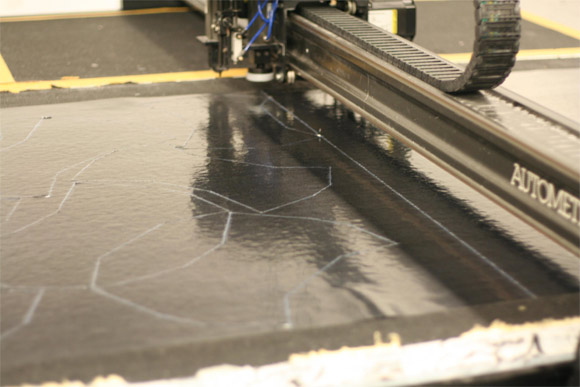
How It’s Made
We begin each bike with a plan; a singular configuration based on the specific characteristics of an individual rider. These measurements are double-checked by our team of engineers to ensure a good start.
Using a state-of-the art cutting table, the premium grade carbon fiber is precisely cut based on individual specifications. We strive to achieve a 70/30 fiber-to-resin ratio in our final product, a fiber content that’s significantly higher when compared to that used by our Asian counterparts. It costs us considerably more, but we think you’re worth it.
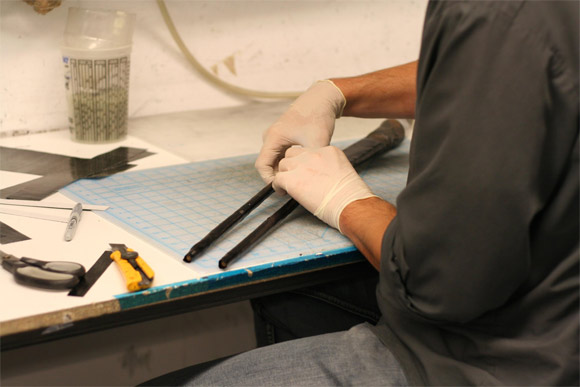
With the rest of the industry using open molds to create their carbon parts – based on the principle of combining two “halves” into one so-called monocoque part – Guru takes a totally different tack. Sorry, this is one of our best-kept secrets. If we told you how we did it, we’d have to…you know.
Let’s just say that we have discovered a revolutionary new way to lay-up carbon that produces true monocoque parts. The elimination of a continuous seam allows the carbon fibers to interact exactly as they were intended to. Ultimately, it results in a frame with a much stronger structural integrity. Given genuinely seamless components, we don’t have to over-build our carbon bikes to compensate for an inherent weakness. The benefit for riders: an ideal stiffness-to-weight ratio combined with a dynamic ride quality that just won’t quit.
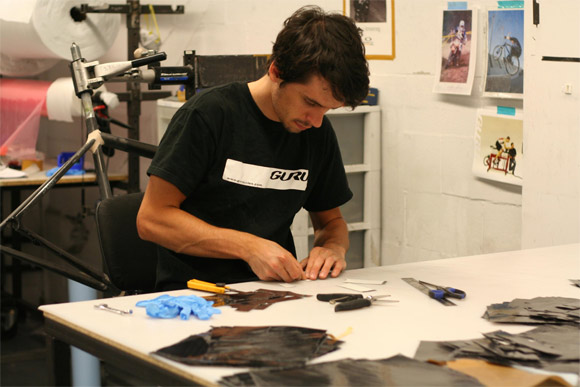
The carbon lay-up is placed in a mold (for each respective part of the frame) and is cured in our very own autoclave unit. The goal at this stage is to pressurize the fiber / resin mix to the max in order to compact the fibers as tightly as possible.
The individual carbon components are removed from their respective molds. Given that every Guru bike has its own distinct configuration, we take the extra time to bring the parts together to ensure a proper fit. The parts are then machined to optimize the overall shape of the frame.
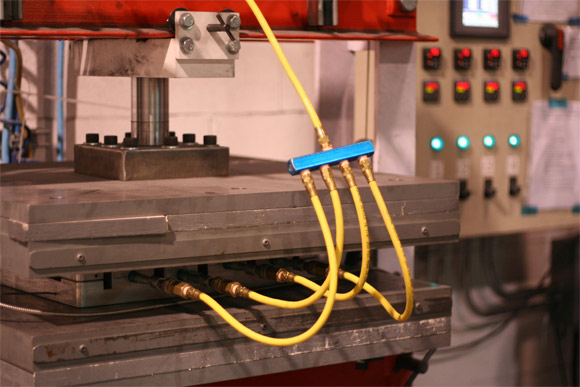
Our builder places the carbon parts into a specialized jig that has been set-up according to the custom geometry schematic. Advanced, aerospace grade adhesives – because those planes just can’t fall apart – are then used to bring the components together into one unbreakable frame.
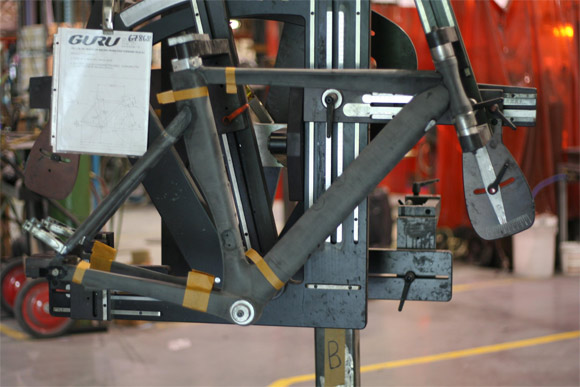
Just before heading to the Guru paint & finish shop, our bike goes through a fine-tuning session where key parts of the frame are sculpted to make sure components will fit flawlessly. Our craftsman meticulously goes over the entire frame and, with special tools, works to perfect its profile.
Finally, when you’ve spent this much time bringing a frame to life, you don’t just slap paint on it—you apply maximum TLC to embellish it for all it’s worth. As with the rest of our fabrication method, painting a Guru carbon bike is a laborious, multi-phased process that requires skilful hands and exceptional patience.
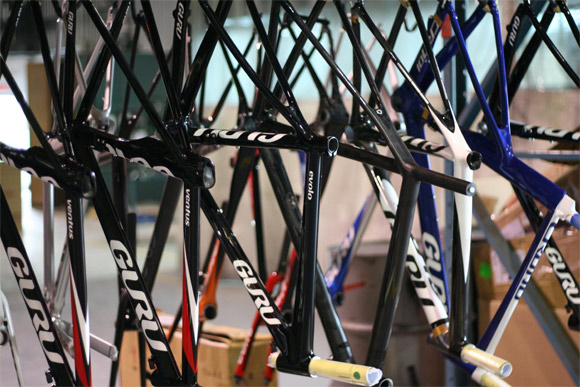
If you’re interested in seeing more detail, an episode of How It’s Made was done. You can watch below:
To learn more about Guru Bikes, head over to their website.
